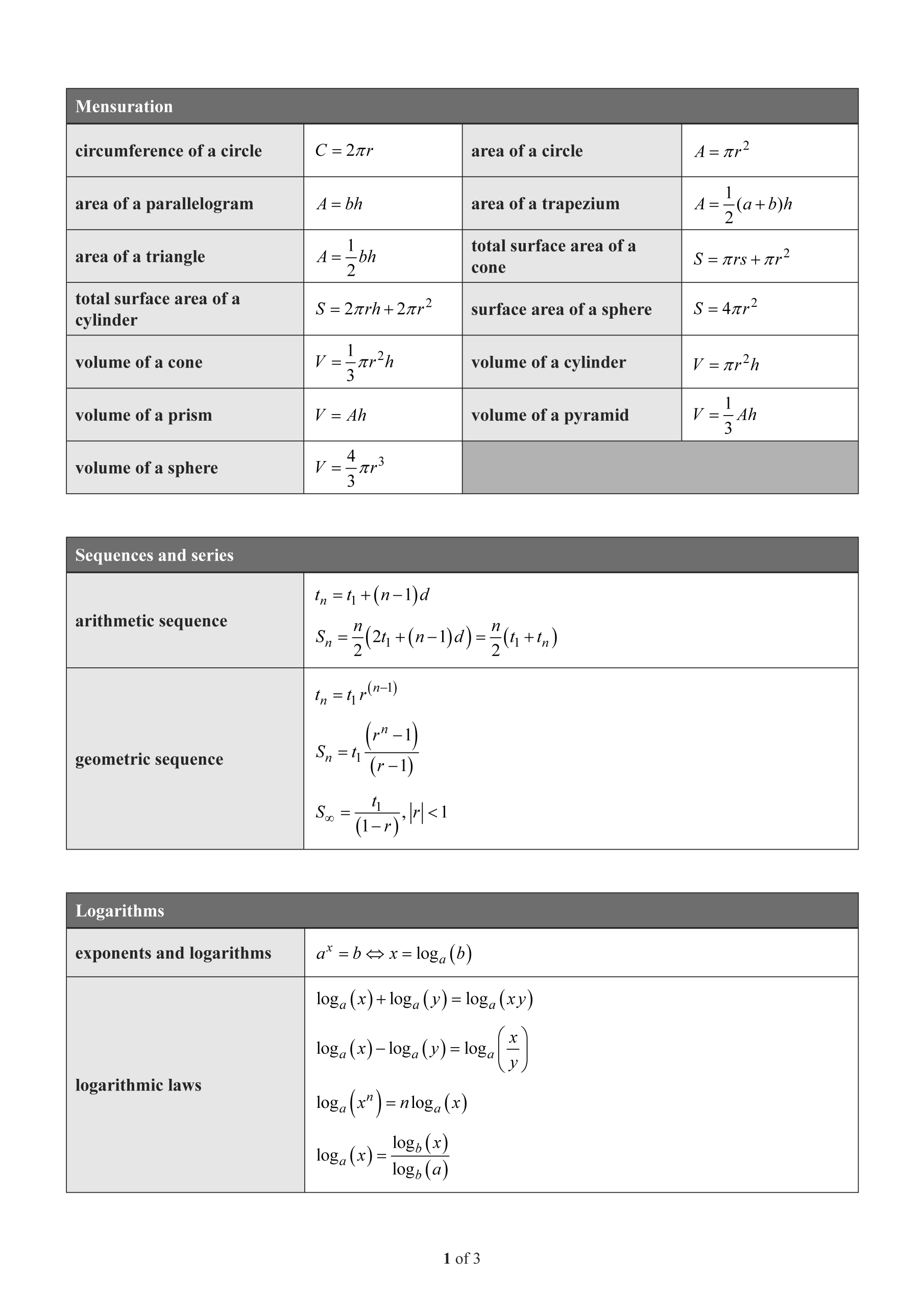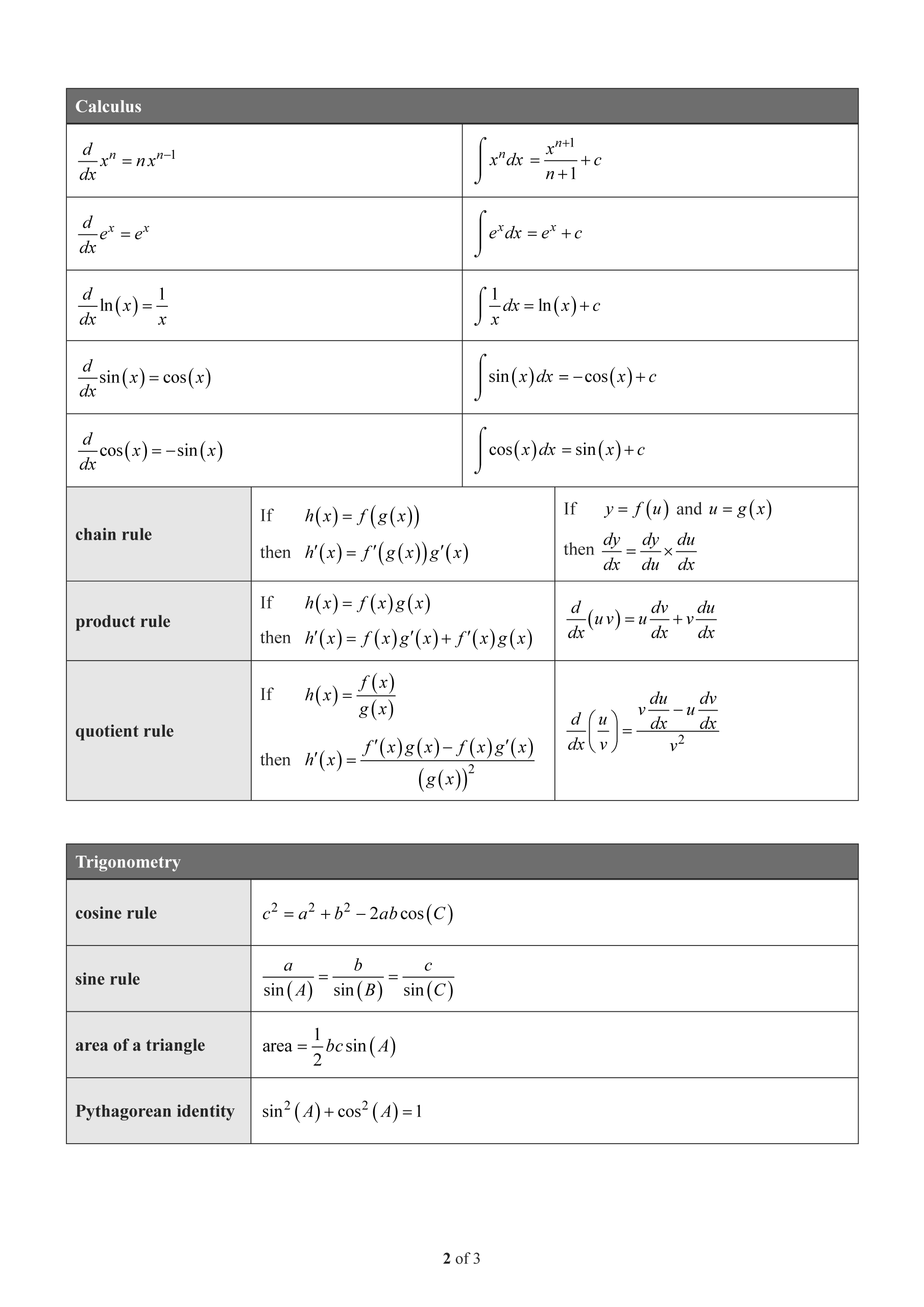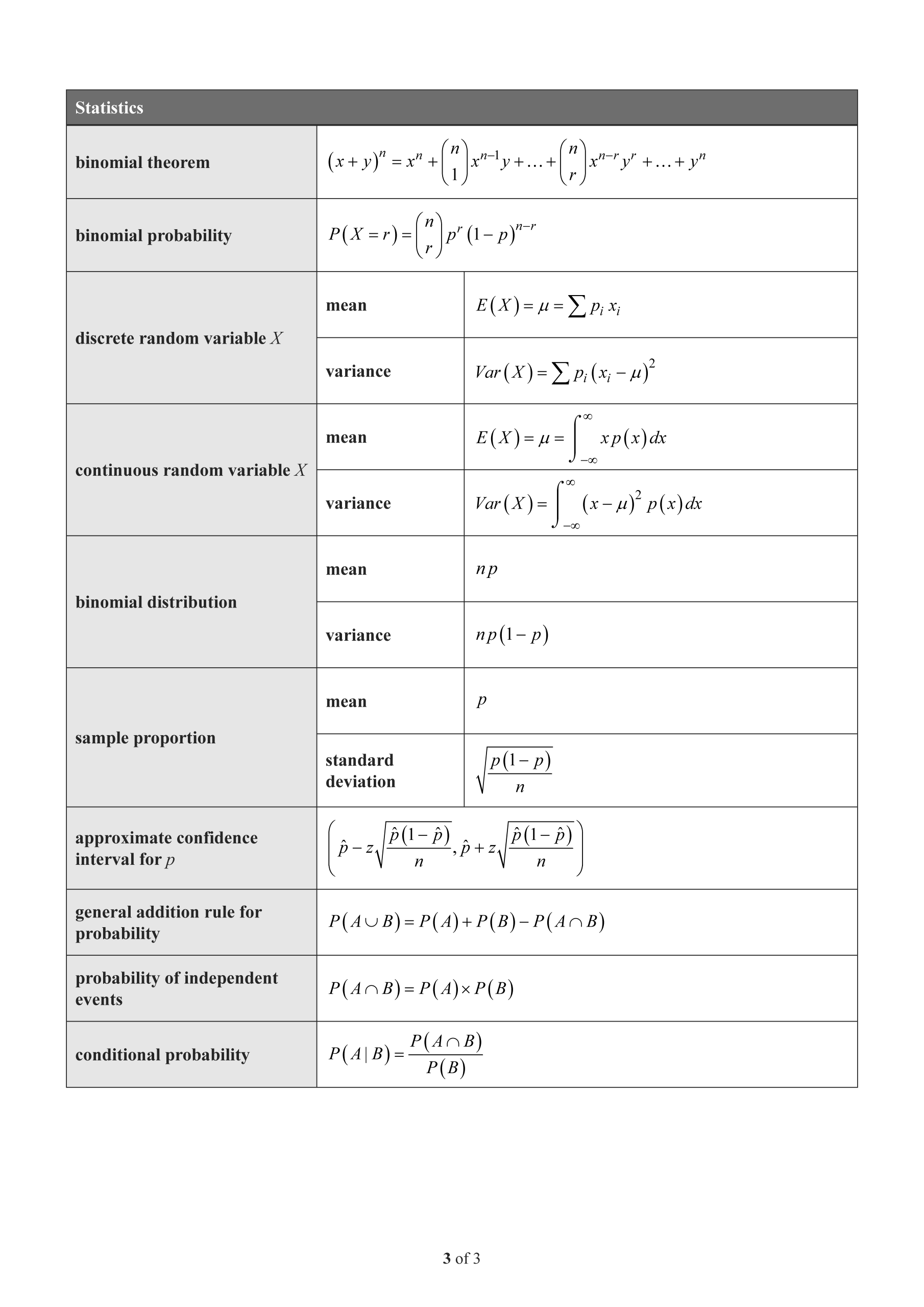2024 QCE Maths Methods Paper 2 Mini Test 3
External Assessment Paper 2 — Technology-active
Number of marks: 9
Perusal time: 1 minute
Writing time: 15 minutes
Section 1
Instructions
• This section has 10 questions and is worth 10 marks.
• Use a 2B pencil to fill in the A, B, C or D answer bubble completely.
• Choose the best answer for Questions 1 10.
• If you change your mind or make a mistake, use an eraser to remove your response and fill in the new answer bubble completely.
The derivative of the function \(f(x)\) is given by \(f'(x) = \sin(2x)\). It is known that \(f\left(\frac{\pi}{2}\right) = 4\). Determine \(f(x)\).
- (A) \(-\cos(2x) + 3\)
- (B) \(\cos(2x) + 5\)
- (C) \(-\frac{1}{2}\cos(2x) + 3.5\)
- (D) \(\frac{1}{2}\cos(2x) + 4.5\)
Consider the Bernoulli distribution where the outcomes for rolling a six-sided die are a four and not rolling a four. Determine the variance of the resulting Bernoulli distribution in this scenario.
- (A) 0.027˙
- (B) 0.138˙
- (C) 0.16
- (D) 0.83
The mass (g) of adult kookaburras in a certain region is normally distributed with a mean of 300 g and a standard deviation of 13 g. Select the correct statement about the mass of adult kookaburras.
- (A) 34% are between 287 g and 313 g
- (B) 68% are between 274 g and 326 g
- (C) 95% are between 261 g and 326 g
- (D) 99.7% are between 261 g and 339 g
Section 2
Instructions
• Write using black or blue pen.
• Questions worth more than one mark require mathematical reasoning and/or working to be shown to support answers.
• If you need more space for a response, use the additional pages at the back of this book.
– On the additional pages, write the question number you are responding to.
– Cancel any incorrect response by ruling a single diagonal line through your work.
– Write the page number of your alternative/additional response, i.e. See page …
– If you do not do this, your original response will be marked.
• This section has nine questions and is worth 45 marks.
A football coach offered a 12-day intensive training clinic. During the clinic, the height that each player could kick a football was monitored.
One player's kick heights could be modelled by \(H(t) = \log_{10}(10t+10)+5\), \(0 \le t \le 12\), where \(H(t)\) is vertical height (m) and \(t\) is the time (days) spent in training.
a) Determine the initial height that the player could kick the ball. [1 mark]
b) Determine the training time needed for the player to be able to kick the ball to a height of 7 m. [1 mark]
c) Determine the overall improvement in kick height achieved by completing the clinic. [2 marks]
d) Determine the rate of change in kick height when \(t = 1.5\) days. [1 mark]
e) Determine the training time (as a decimal) when the rate of change in kick height is 0.09 m/day. [1 mark]
END OF PAPER


